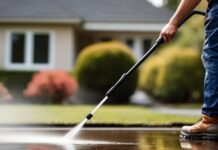Finished and unfinished basement storage can be tricky. Follow a few rules to make sure you keep the right things in your home’s lower level.
Ah, the joys of having a below-ground level to your home. It might offer you a bonus space to transform into a family room or guest bedroom, or even just provide the right amount of square footage to use for short- and long-term storage. But basements and storage don’t always make for happy home partners.
Some basements – prone to flooding, moisture-related mold, even an insect or two – may not be the best place to pile all your excess and seasonal belongings. Consider these ideas to figure out what not to store in a basement, and how to stash items that are safe to place below ground.
What not to store in a basement
Electronics: Stashing gadgets you might use in the future – an old gaming system, for example – in an unfinished basement may seem like a good idea, but evaluate how climate-controlled your space is. If you’ve not finished any of the space, bulky and pricey electric items such as power drills or kitchen stand mixers are better off on ground level or above. If your basement is finished, make sure that any TVs or other electronics are in a moisture-free space, off the ground.
Artwork: Still figuring out what to do with that painting you purchased on a whim? Don’t leave it in an unfinished basement. Humidity and poor ventilation can damage delicate paintings, photographs, and other items.
Flammables: Many DIY materials such as paint and other home supplies – think extra propane tanks – pose a fire risk, particularly if adjacent to gas-powered appliances. Follow manufacturer recommendations for storage.
Books and documents: Poor ventilation and humidity can wreak havoc on anything with a paper component. Unless your space is finished and not subject to big climate variations, store books above ground and in sturdy, leak-proof containers. Store hard-to-replace documents such as birth certificates and Social Security cards higher than the basement in a locked fire box.
How to store things in a basement
If your basement gets damp: Invest in mold-proof storage containers to store anything that might attract moisture, including books and clothing.
If your basement is unfinished: Install shelving units so you can keep items you’re storing in the basement off the floor.
Clothes: Keep extra or seasonal clothing in sealed containers off the basement floor, if possible.
Furniture: Place foldable items stacked neatly against a wall so they’re accessible but retrievable. Any fabric or foam pieces, such as cushions, should be cleaned and stored off the basement floor.
Bulk household and kitchen supplies: Larger quantities of necessities, including toilet paper, paper towels, disposable dishes, and any other household items, should be stored on shelving off the ground. That way, even if your basement floor does get damp, it won’t damage these items.
Non-perishable food: As with bulk household supplies, stash the extras on shelves off the basement floor.
Outdoor accessories: The basement is a good spot for yard accessories or other gardening supplies. However, heavier outdoor furniture can remain outside under all-weather covers.
Tip: Keep a small donation bin in the basement to collect items such as old toys, clothes, and blankets that are ready to repurpose. When the bin is full, take it to a donation drop-off point.
This information is brought to you by State Farm. Contact your local State Farm Agent, Ed Underwood for your home insurance needs and questions. Click here to get a quote or call 615-771-0700 to get information. Like Ed Underwood on Facebook!
Subscribe to our FREE Newsletter!



























